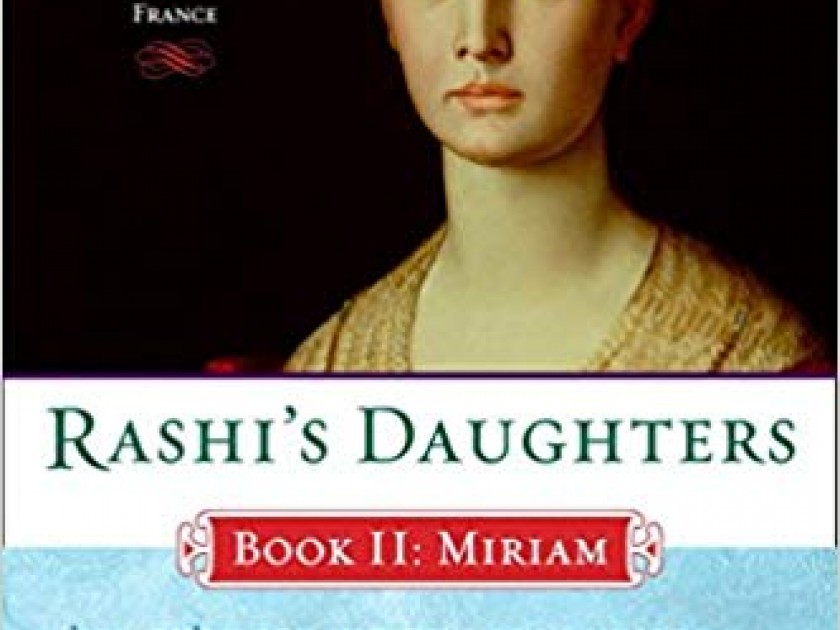
In her last posts Maggie Anton, the author of the Rashi’s Daughters trilogy, reviewed Elie Wiesel’s Rashi and wrote on being a historical novelist.
When I first decided to write a trilogy of historical novels about Rashi’s daughters, one for each, I knew that the third book, on Rachel, would contain scenes occurring in the First Crusade. In particular I would be writing about the destruction of Rhineland Jewry in the Spring of 1096. Anticipating that researching this subject could be painful, I deliberately put it off as long as possible. And while some ‘eyewitness’ accounts were indeed horrific, I discovered that much of what I thought I knew about how the First Crusade affected European Jewry was more misconception than reality.
The biggest misconception Jews have about the First Crusade is that it directly caused the destruction of medieval French and German Jewry. But it is only with 20 – 20 hindsight that we can see European Jews beginning to lose status and anti-Semitism rising after the First Crusade. Judging by its almost complete absence in contemporaneous Jewish writings, most Jews took little notice of events in the Rhineland in 1096, just as they had ignored the Berbers’ destruction of Jewish life in Tunisia fifty years earlier. A large number of people were killed during the First Crusade, and the 10,000 German Jews who died, either by their own hand or at the hands of crusaders, was dwarfed by the over 100,000 peasants of the People’s Crusade who perished without reaching the Holy Land and tens of thousands of knights who died on the journey.
Yet I firmly believe that the First Crusade was instrumental in bringing about the Jews’ decline – first for economic reasons. Until the crusaders came en masse to Byzantium and the Holy Land, Jews had a monopoly on long distance trade between Christian Europe and the Muslim Levant, buying surplus produce cheap in one locale and selling at a profit in the other. Franks and Germans paid high prices for silk and spice, just as Egyptians and Arabs paid high prices for woolens and wine, with neither group knowing how little these items cost in their native lands.
Once Christians reached the Levant, two things happened: 1) they grew angry at how the Jews had ‘overcharged’ them; 2) they realized how profitable the business was and [Italians in particular] became merchants themselves. In less than 100 years, the great Italian city-states had not only broken the Jewish trading monopoly, they had supplanted the Jews as the chief financial powers in Europe. Over the same time period, the rise of craftsman’s guilds affiliated with specific churches [which obviously excluded Jews] led to further limiting of Jews’ choice of occupations. Given a choice between doing business with Jews and Christians, most Europeans patronized their compatriots, further eroding the Jews’ income.
But the massacres of the First Crusade had another, more insidious, effect on relations between Christians and Jews. Christians were horrified to see Jews kill themselves to avoid baptism. They were outraged that Jews would kill their own children rather than let them be captured, and the only explanation Christians could imagine was that Jews were somehow lacking in human feelings. It was only a small step to believe that Jews must be something other than human, something less than human, demonic even. Judaism was no longer Christianity’s ‘little brother’ who shared the same Bible, but an enemy of Christianity with its own heretical text, the Talmud.
Jews, knowing that German burghers opened their city gates to the crusading hordes and joined in their attacks, began to distrust Christians in general. Each side viewed the other with increasing enmity. When many German Jews who were forced to apostatize returned to Judaism [and were viewed as heretics by the Church], those who remained Christians were never quite accepted. The expansion of the Inquisition, originally created to root out Cathars and Albigensians, focused the Church’s attention not only on converted Jews suspected of being Christians in name only, but also on Jews who encouraged their former coreligionists to backslide. No one with Jewish ‘blood’ was safe from their scrutiny, and anyone with a grudge against either a Jew or former Jew had only to report them to the Church to get revenge. Thus anti-Semitism grew into a thriving entity that has continued for almost 1000 years, one that was only indirectly caused by the First Crusade.
Maggie Anton’s newest book, Rashi’s Daughters, Book III: Rachel: A Novel of Love and the Talmud in Medieval France, is now available. Visit http://www.rashisdaughters.com, her official website.
Maggie Anton is an award-winning author of historical fiction, as well as a Talmud scholar with expertise in Jewish women’s history. Intrigued that the great Jewish scholar Rashi had no sons, only daughters, she researched the family and their community. Thus the award-winning trilogy, Rashi’s Daughters, was born. Since 2005, Anton has lectured about the research behind her seven books at hundreds of venues throughout North America, Europe and Israel.